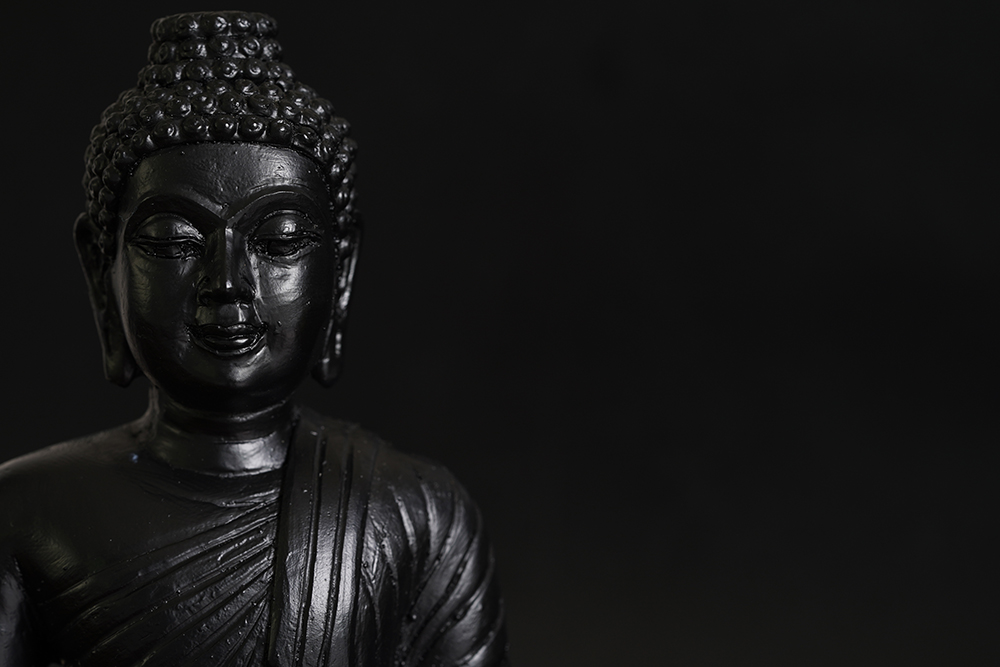
Martin Goodson
The Story of Sanakavasa | Part 2
"In this lump of red flesh there is one who goes in and out of the sense gates a thousand times a day. Do you know him?”
 ©
© shutterstock
In time Sanakavasa transmitted the Dharma-eye to Upagupta. He recited a gatha or verse:
It is neither a dharma nor a heart
For neither heart nor dharma exist
When talking of heart and dharma
This Dharma is not the heart or the dharma.
There is a story told of the Chinese patriarch Baso who came to his insight upon hearing the phrase “Heart is Buddha”.
‘Buddha’ is the title of the Enlightened One, the one who ‘is awake’ which is the etymology of the title.
As I sit here typing these words, there is the one who is aware of the temperature of the room, who is aware of the warm cat sitting against my leg and the sound of the dryer operating in the other room.
It may be that ‘my’ attention is focused on the few inches of screen where the words are just now appearing.
The one who is taking in all this sense data, right now just as it is, is in Sanskrit called ‘vijnana’ or sense consciousness. It is the one who knows all of this and is also present when ‘I’ am fast asleep. So, if the room gets too warm then the arms push away the covers, and if it is too cold, the body snuggles down under the duvet for warmth. Even when I am fast asleep and the alarm goes off, something hears that alarm and wakes ‘me’ up.
It is this one who is there, whether ‘I’ am there or not, who is being referred to here.
Master Rinzai said of this one:
“In this lump of red flesh there is one who goes in and out of the sense gates a thousand times a day. Do you know him?”
So, Baso taught, and brought to insight, many of his students using this phrase ‘Heart is Buddha.’
But after a while people got quite used to hearing it. They would say:
“Oh! Master Baso, he teaches ‘Heart is Buddha.’
So, when Baso heard about this, he changed his teaching to:
‘Neither Heart, nor Buddha’.
That set the cat amongst the pigeons!
It would seem odd to teach one thing and then suddenly do an about turn and teach the opposite would it not?
But we remember the words of the First Chinese Patriarch, Bodhidharma, who said:
‘A special transmission, not dependent upon words and phrases.’
However, that is not to say that we abandon words or phrases, just that the truth is not contained in them. Unfortunately we like to grasp at the truth in this way, even the Buddha after his own Enlightenment pondered just how to teach a truth that goes beyond words and concepts.
In the end, he realised that he could only point the way . So, all the 84,000 teachings of Buddhism are just that. There is nothing that says what it is that the Buddha saw, the teachings are only a finger pointing at the full clear moon, not the moon itself.
Having finished this gatha, he secreted himself in the White Elephant Mountains in Kashmir. Later, whilst in samadhi, he saw that Upagupta’s five hundred disciples were often extremely negligent. The master then immediately went into the ‘aroused dragon’ samadhi and through this transformation made them yield by reciting this gatha:
Unobstructed, it is not a this or a that.
Having come to sagehood,
It is without length or breadth.
If you get rid of facile meanings
Arhatship is swiftly attained.
After the five hundred had heard this gatha, they respectfully practiced by relying on this teaching and all came to ‘the state of being’ without outflows. The master then performed the eighteen transformations of the fire-light samadhi and then cremated himself. Upagupta collected the sarira relics and buried them in the Brahmakala Mountains.
Sometimes a master will pass on the succession and go into retirement, just as Sanakavasa did in this account here. However, the Great Bodhisattva Vow never sleeps and so he roused himself when Upagupta’s disciples became lazy.
We humans are mammals, and all mammals are lazy by nature. This is necessary because, having foraged for food and eaten, if there is nothing else to be done then why waste precious calories? So, just as a cat or a dog will be active if there is something to be done but will go to sleep when there is nothing to be done , so we too, quite naturally, can become lazy if we do not see the need to bestir ourselves.
But the ‘Great Matter of Life and Death’ requires effort and persistence, and the need for motivation is paramount in order to counter this tendency.
Therefore, Sanakavasa roused these lazy disciples by exhorting them that the path to Arhatship can be swiftly attained if a great effort is made. This has always been the Zen way; to teach that Enlightenment is not for some far distant time but is right now in this very life. And So, what are we waiting for?




